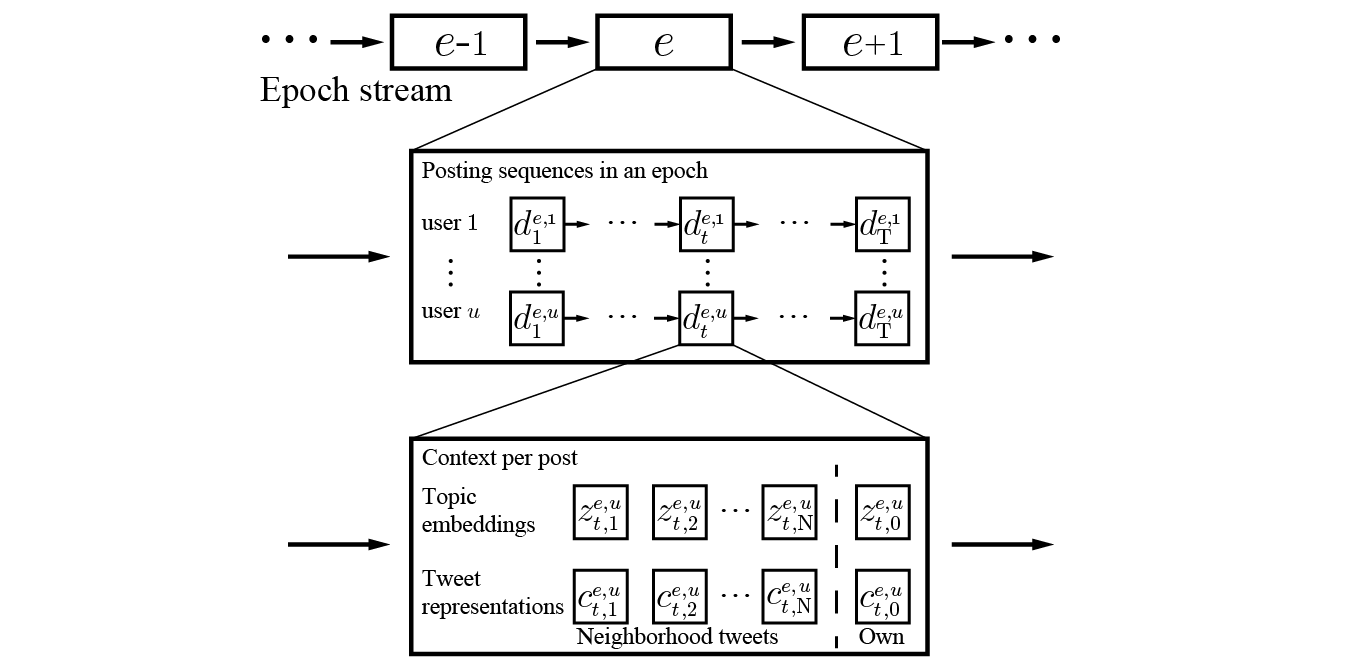Opinion Detection on Twitter
Summary
Neural Opinion Dynamics (NOD) model is built on Recurrent Neural Networks (RNNs) to capture the three key factors for the prediction of user-level opinion dynamics: The user’s past opinions, the user’s neighborhood opinions, and contextual information about topics. Assume that tweets arrive in a temporal order and can be split into epochs. Each epoch stretches for a fixed window size which can be either time-based (e.g., a day) or count-based (e.g., 10k tweets). We aim to predict the topic-related stance for each user within each epoch.

Current Approach
- We use a Recurrent Neural Network (RNN) to model each user’s posting behaviors on Twitter and incorporate their neighbors’ topic-associated context as attention signals using an attention mechanism for user-level stance prediction. An LSTM layer is first used to generate the representation for each tweet. The tweet representation and the corresponding topic embedding are concatenated and subsequently combined with the context information captured by the neighbors’ tweets using an attention mechanism to generate the integrated representation for the target tweet posted by a user. Each user has a sequence of posts in each epoch, which are passed to a GRU layer to obtain the user representation. Finally, the user representation is used as features to predict the topic-stance.
- Topics are detected by HLDA, which captures the topic information of each tweet.

Publications
L. Zhu, Y. He and D. Zhou. Neural Opinion Dynamics Model for the Prediction of User-Level Stance Dynamics. Information Processing and Management, 57(2):102031, 2020.
